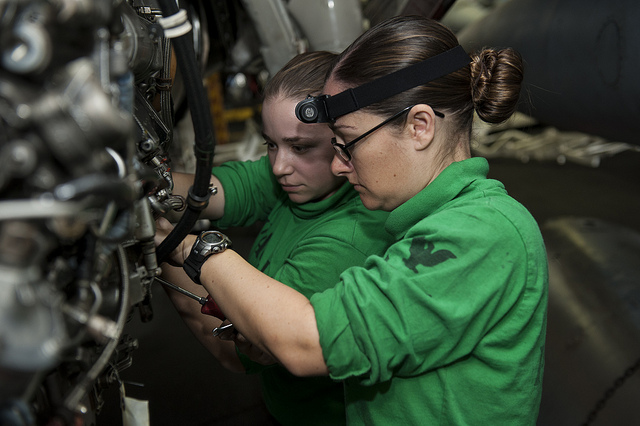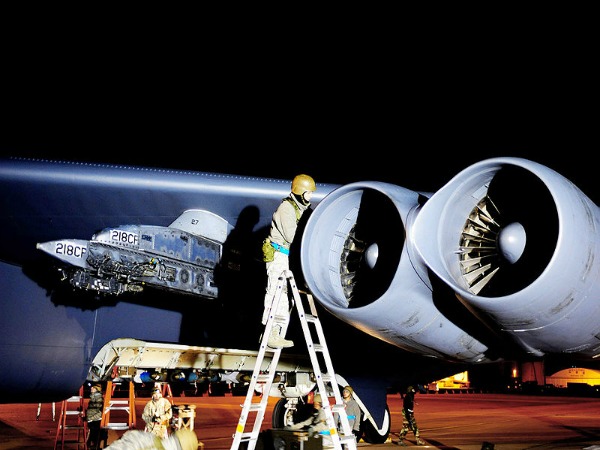Let’s face it you want to be cheap.
This isn’t always true through procurement since quality comes at a higher price. Getting a WalMart “Everyday Low Price” is a scary thought for a $50,000 avionic.
But operationally you want to be cheap without sacrificing efficiency. This is why we are a huge proponent of Lean Six Sigma.

I had the opportunity to discuss this very topic with an airline executive.
We entered the coffee shop and a fresh aromatic smell entered our noses. You know the smell I’m talking about.
We ordered our coffee and discussed the war stories we each had encountered in the aviation industry. Both witnessing tragic endeavors for nearly 2 decades in different parts of the aviation industry, we had a lot to talk about.
Finally our names were yelled as though we were at a fair. Our coffee was ready and with scorching hot cups we proceeded to sit.
I bluntly asked the gentlemen, how he precluded to ensure operational efficiency.
His answer was, do everything ourselves.
I about fainted and blurted out WRONG.
Operational Efficiency
Operational efficiency is defined as the “...ratio between the input to run a business operation and the output gained from the business. When improving operational efficiency, the output to input ratio improves. Inputs would typically be money (cost), people (headcount) or time/effort. Outputs would typically be money (revenue, margin, cash), new customers, customer loyalty, market differentiation, headcount productivity, innovation, quality, speed & agility, complexity or opportunities.”
I will cut to the point to avoid any sudden onslaught of boredom.
For any airline operational efficiency is when you operate to maximize your revenue generating activities and minimize your expenses. Easy I know. I’m no Albert Einstein when I define this.
The problem with my airline friend's response in the beginning story is that he relies too much on internal pressures where certain activities could be outsourced.
Managing inventory, aircraft asset remarketing, and surplus inventory and sales is not his strong suit. He’s adding additional expense and taking away from their core focus, keeping the fleet in the air and reducing cost.
How to be cheap and profit
We all want to reduce cost, it’s the best way to expand the bottom line. As long as you aren't cutting back where operational efficiency will suffer.
I have 5 ways you can save, generate more money and become more profitable by utilizing an aircraft asset management partner.
Reduce cost of money: Nobody likes holding cost. Lets say you have $5M worth of inventory in which you're more than likely sitting on a credit line. What if you could reduce that inventory to $4M? I’m sure you could use the additional $1M in increased cash flow rather quickly, for better uses. This cost is typically seen at 15% of your average inventory.
Cost on $5M of inventory = $750,000
Reduce storage cost: No matter if you own or lease you’re paying for warehouse space. The more inventory you have, the more warehouse you need. From computers, to racks, mezzanines to boxes the list can go on. What could you do with a smaller space? Storage cost adds 4% to your carrying cost.
Cost on $5M of inventory = $200,000
Reduce Taxes: Ronald Reagan once said, “Government's view of the economy could be summed up in a few short phrases: If it moves, tax it. If it keeps moving, regulate it. If it stops moving, subsidize it.” Your inventory is always moving so whether you like it or not the government will more than likely tax it depending on where you're located. From an accounting standpoint, an increase in inventory is shown as a profit and will be taxed as such. Taxes will typically add 2.5% to your annual carrying cost.
Cost on $5M of inventory = $125,000
Reduce waste: Let’s face no matter how much you plan waste will always follow inventory. You cannot plan the market 100% of the time. From overbought gaskets whose shelf life has been reached, an outdated TCAS system, or excess expendables waste is on your shelf. It can be safe to say that most of these won't be going anywhere any time soon. Waste can usually add 1% to your annual carrying cost.
Cost on $5M of inventory = $50,000
Reduce shrinkage and spoilage: Dan Kiefer explains this best when he says “...This category should not be confused with obsolescence. This category includes inventory that came into the warehouse and should have been sold but can’t and won’t be. Where as obsolescence and spoilage have to do with purchasing and the market demand, pilferage and damage can often be attributed to human behavior in your warehouse. Although this cost can vary greatly from one warehouse to the next, and can often be controlled and reduced, it can never really be eliminated. Whether a forklift hits a pallet, a jar gets dropped during handling, or someone gets overzealous with a box cutter, damaged products in a warehouse are a fact of life and must be accounted for. The longer something sits in your warehouse, the greater the risk of it being damaged or disappearing.” The typical cost associated with shrinkage and damage is 1%.
Cost on $5M of inventory = $50,000
Reduce insurance: Your insurance company is charging you based on the average amount of inventory you have on your shelf. If not, please refer me to your insurance company as I’ll change policies immediately. The cost is not huge but it’s still an unnecessary cost for unwanted, unused material. Insurance costs are typically .5%.
Cost on $5M of inventory = $25,000
For a $5M inventory your annual carrying costs are $1,200,000. WOW!
You can solve this by taking advantage of an asset management program.
Whether it’s an aircraft ending its life or surplus inventory sitting on the shelf the right partner can market your assets at an attractive price to liquidate and generate revenue.
You will immediately reduce carrying costs and operate within operational efficiency.
We have just the program for you. Click here to show your interest.















